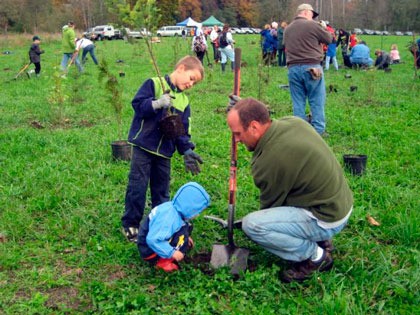ARLINGTON — Chinook salmon in the South Fork Stillaguamish River face extreme risk of extinction in the relatively near future. With numbers that once topped 20,000, currently an average of only 246 Chinook return each year.
One of the key issues in the South Fork Stillaguamish and its tributaries has been the loss of mature forest adjacent to waterways and within the overall watershed. The removal of forest cover reduces shade, thereby increasing water temperature and reducing the levels of dissolved oxygen available for salmon to breathe. The loss of riparian and upland forest also increases erosion and stream flows, which contributes to elevated sediment levels and flooding as less trees are present to stabilize soils and to slow down and absorb water during storm events.
Enter the Stilly-Snohomish Fisheries Enhancement Task Force. A non-profit organization, the Stilly-Snohomish Task Force works to ensure the future of salmon in the Stillaguamish and Snohomish Watersheds.
In partnership with the city of Arlington, the Stilly-Snohomish Task Force will complete a two-year riparian enhancement project on the South Fork Stillaguamish River at the new Country Charm Conservation. The Task Force and city of Arlington will work with hundreds of volunteers over the next two years to plant thousands of native trees and shrubs along the South Fork Stillaguamish at this new public space. These efforts are funded by a grant from the state Salmon Recovery Funding board.
To kick off this large revegetation project, the Stilly-Snohomish Task Force and City of Arlington coordinated a volunteer tree planting for Make A Difference Day 2010. On Saturday, Oct. 23, 95 community volunteers, including several Girl and Boy Scout groups, helped make a difference for people and for fish by planting over 550 native plants on the South Fork Stillaguamish Rvier. Students from English Crossing Elementary will complete the fall planting effort in early November by planting an additional 150 plants as part of a year-long education program funded by the state Department of Ecology.
For more information, visit www.stillysnofish.org.








